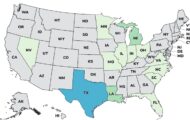These food safety tips for Passover and Easter will help you celebrate while keeping everyone safe from food poisoning. Every time a group of people gather to eat, food safety rules are very important, especially if the group includes people at high risk for serious complications from foodborne illness.

Of course, follow the rules of Clean, Separate, Cook, and Chill. Clean your kitchen before you start and wash your hands and utensils to avoid spreading pathogens. Separate by keeping raw meats, poultry, and eggs from foods that are eaten uncooked such as produce. Cook food to safe final internal temperatures and test with a food thermometer. Chill leftovers within two hours of taking food out of the oven or fridge; one hour if the air temperature is 90°F or higher.
Eggs
Eggs shouldn’t to sit out at room temperature for more than two hours; keep hard cooked and raw eggs in the fridge. All cooked egg dishes should be cooked to 160°F, and that temp needs to be tested with a reliable food thermometer.
If you are going to color eggs, only use hard cooked eggs, and only use safe approved food grade color. If you hide eggs outside, it’s a good idea to not eat those eggs, especially if they come into contact with the ground. Consider making two sets of dyed eggs; one for eating, the other for decorating and hiding. Plastic eggs are a good choice for an Easter egg hunt.
Brisket
For kosher meats, make sure any of these products you buy have the USDA mark of inspection so you know the meat was produced in an establishment inspected by the government.
If you buy a frozen brisket, it should be thawed before you bake it. Thawing in the refrigerator will take about 24 hours for a trimmed, first-cut brisket.
Bake the brisket in an oven with a temperature no less than 325°F. The brisket is cooked when it reaches an internal temperature of at least 145°F and then is left to sit, covered, for three minutes.
Ham
Make sure you know the type of ham you are buying. Fresh, uncooked hams must be cooked to 160°F. Ready to eat hams can be eaten right out of the package, or you can heat them to serve warm.
Hams can be fresh, cured, or cured and smoked. Any ham that is not ready-to-eat, but looks cooked, will have a prominent statement on the label indicating that the product must be cooked before serving, and there must be cooking instructions.
To reheat cooked hams, use an oven temperature of no less than 325°F and heat the ham to at least 140°F. For cooked hams that are repackaged in any location outside the processing plant, or for leftover cooked ham, heat to 165°F.
Spiral sliced hams can be eaten cold. If you choose to reheat them, cover with foil and heat at 325°F for 10 minutes per pound.
Other Dishes
All side dishes that contain eggs should be cooked to 165°F. Wash vegetables and fruits before you prepare them. Use a separate cutting board for meats and produce. Keep all cold foods refrigerated until it’s time to serve. And do not prepare any foods made with eggs or flour unless they are thoroughly cooked.




